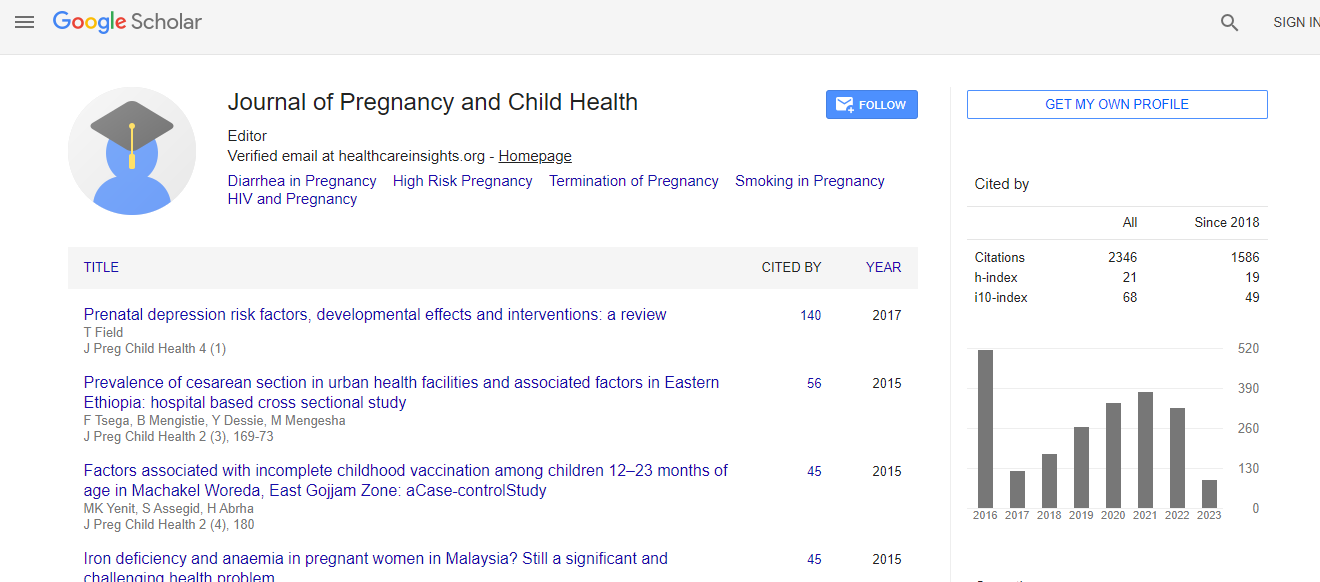Research Article
Prevalence and Associated Factors of Unintended Pregnancy in Welkaite Woreda, Tigray and North Ethiopia Cross Sectional Study by 2012
| Haftamu Abayu1*, Zelalem Birhanu2, Ansha Nega2 and Abadi Kidanemariam3 | |
| 1Adigrat University, college of Medicine and health science, Department of Public Health, Tigray, North Ethiopia | |
| 2Gondar University, college of health science, Institute of public health, Amhara, North Ethiopia | |
| 3Adigrat University, college of Medicine and health science, Department of Nursing, Tigray, North Ethiopia | |
| Corresponding Author : | Haftamu Abayu Adigrat University College of Medicine and Health Science Department of Public Health Tigray, North Ethiopia Tel: 251914117054 E-mail: haftamu.abayu@yahoo.com |
| Received January 06, 2014; Accepted February 20, 2015; Published February 26, 2015 | |
| Citation: Abayu H, Birhanu Z, Nega A, Kidanemariam A (2015) Prevalence and Associated Factors of Unintended Pregnancy in Welkaite Woreda, Tigray and North Ethiopia Cross Sectional Study by 2012. J Preg Child Health 2:137. doi: 10.4172/2376-127X.1000137 | |
| Copyright: © 2015 Abayu H, et al. This is an open-access article distributed under the terms of the Creative Commons Attribution License, which permits unrestricted use, distribution, and reproduction in any medium, provided the original author and source are credited. | |
Abstract
Background: Of an estimated 210 million pregnancies that occur in the world each year, 38% are unplanned, out of which 22% end in abortion. In Ethiopia, the estimates of unintended pregnancy indicate that it is one of the major reproductive health problems with all its adverse outcomes.
Objective: The objective of this study was to assess the prevalence of unintended pregnancy and its associated factors among pregnant women in Welkaite district, Tigray region, northwest Ethiopia.
Methods: Acommunity based cross sectional study was conducted from 24/09/2012 to 18/10/2012 among pregnant women. The study includes 626 pregnant women found in Welkaite district selected from the study population using cluster sampling technique. A structured questionnaire was used for data collection. Data were analyzed using SPSS. Adjusted Odds Ratio was used to assess the strength of association and declare significance of the associations.
Results: Unintended pregnancy was reported by 26% (166/626) of the study subjects. Out of which, 75.9% were mistimed and 24.1% were unwanted pregnancy. Unintended pregnancy was associated with ante natal visit (AOR=3.434;95%CI:2.136,5.520), awareness of contraceptive (AOR=2.830;95% CI: 1.527,5.244)., husband communication about pregnancy (AOR=2. 245; 95% CI: 1.430,3.524) , awareness of the concept of unintended pregnancy is preventable (AOR=2. 563 ; 95% CI: 1.580,4.158).
Conclusions: In this study prevalence was high, and,women’s decision to follow antenatal care, and antenatal care visit, ever heard contraceptive communication with husband were strong predictors of unintended pregnancy.
Recommendation: Women’s need to be, strength, communication with husband about pregnancy, antenatal care follow up, and women’s information, education; communication programs and improvements in counseling about contraceptive is recommended to decrease unintended pregnancy

 Spanish
Spanish  Chinese
Chinese  Russian
Russian  German
German  French
French  Japanese
Japanese  Portuguese
Portuguese  Hindi
Hindi 
